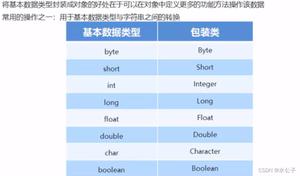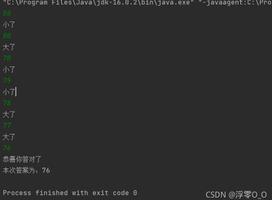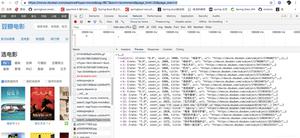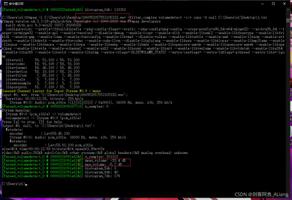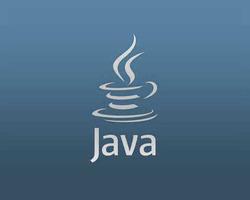Java基础-IO流(13)

IO流用来处理设备之间的数据传输.可以实现文件复制,上传文件和下载文件.
Jdk提供的流继承了四大类:InputStream(字节输入流),OutputStream(字节输出流),Reader(字符输入流),Writer(字符输出流)。
对文件进行操作:FileInputStream(字节输入流),FileOutputStream(字节输出流),FileReader(字符输入流),FileWriter(字符输出流)
对管道进行操作:PipedInputStream(字节输入流),PipedOutStream(字节输出流),PipedReader(字符输入流),PipedWriter(字符输出流)
PipedInputStream的一个实例要和PipedOutputStream的一个实例共同使用,共同完成管道的读取写入操作。主要用于线程操作。
字节/字符数组:ByteArrayInputStream,ByteArrayOutputStream,CharArrayReader,CharArrayWriter是在内存中开辟了一个字节或字符数组。
Buffered缓冲流::BufferedInputStream,BufferedOutputStream,BufferedReader,BufferedWriter,是带缓冲区的处理流,缓冲区的作用的主要目的是:避免每次和硬盘打交道,提高数据访问的效率。
转化流:InputStreamReader/OutputStreamWriter,把字节转化成字符。
数据流:DataInputStream,DataOutputStream。
文件中的内容是无法直接操作的,所以要把文件中的数据读取到内存中,然后修改内存中的数据,修改完成后再由内存写入到文件中.
这里我们以操作文件为例子,主讲FileReader和FileWriter以及他们的缓冲流.
IO流
IO流可以吧数据存储到文件,也可以从文件中读取数据
输出流(写数据用)
FileWriter
void write(String str) //写一个字符串数据void write(String str,int index,int len) //写一个字符串中的一部分数据
void write(int ch) //写一个字符数据,写int类型好处是既可以写char类型的数据,也可以写插入对应的int类型数据
void write(char[] chs) //写一个字符数据
void write(char[] chs,int index,int len) //写一个字符数组一部分
步骤
往文件中写数据(对于cpu来说是往外输出)-->用输出流-->-->FileWriter输出流写数据的步骤:
A.创建输出流对象
B.调用输出流对象写数据的方法
C.释放资源
构造方法,创建输出流对象
FileWriter(String fileName) //fileName为文件路径不写盘符为相对路径(相对项目)
FileWriter(String fileName,boolean append) //输出到文件时添加到文件尾
成员方法
void write(String str) //调用流对象写数据方法
//数据没有直接写到文件中,其实是写到了内存缓冲区
void flush() //将内存缓冲区中的数据写入文件
void close() //关闭流,不然会一直占用文件无法操作文件.
输入流(读数据用)
FileReader
构造方法FileReader(String fileName)
成员方法
int read() //一次读取一个字符,返回的是字符的int值.如果没有数据了,返回-1
int read(char[] cbuf) //返回的int是实际读取的字符个数,cbuf是
步骤
A.创建输入流B.调用输入流对象的读数据方法
C.关闭流
close()和flush()方法区别
A.flush()刷新缓冲区.刷新后流对象还可以继续使用
B.close()先刷新缓冲区,然后通知系统释放资源.流对象不可以再使用.
向文本文件中写字符时换行的方式mac是\r,linux是\n,windows是\r\n
文件复制(传输)时先用FileReader读取数据,再用FileWriter写数据.即先I在O.
//创建输入流对象FileReader fr = new FileReader("source.txt");
//创建输出流对象
FileWriter fw = new FileWriter("target.txt");
/*读写数据
int ch;
while((ch=fr.read())!=-1) { //读取到了返回字符int值,读不到返回-1
fw.write(ch);
}*/
//读写数据
char[] chs = new char[1024]; //一般写1024的整数倍
int len;
while((len=fr.read(chs))!=-1) { //读取到字符数组时返回数组长度,读取不到返回-1
fw.write(chs, 0, len); //最后一次读取的len可能小于1024.最后一次读取的放入char数组中覆盖上一次读取的前半部分,没覆盖的后半部分仍然是上次读取的内容,所以要从0读到len,len-1024是倒数第二次读取的内容.
}
//释放资源
fw.close();
fr.close();
char数组内存中的数据如下
FileReader fr = new FileReader("source.txt"); //调用输入流对象的读数据方法
//int read(char[] cbuf):一次读取一个字符数组的数据,返回的是实际读取的字符个数
char[] chs = new char[5];
//第一次读数据
int len = fr.read(chs);
System.out.println("len:"+len);
//System.out.println(new String(chs));
System.out.println(new String(chs,0,len));
//第二次读数据
len = fr.read(chs);
System.out.println("len:"+len);
//System.out.println(new String(chs));
System.out.println(new String(chs,0,len));
//第三次读数据
len = fr.read(chs);
System.out.println("len:"+len); //最后一次为4,多以char[4]并没有被覆盖,仍然是r
System.out.println(new String(chs,0,len));
当source.txt中为
helloworld
时,内存中char数组三次读取数据是这样的
缓冲流
缓冲流可以提高效率,所以每次用IO流读写时要在外面包装一层缓冲流
特殊功能
BufferedWriter
void newLine() //换行
BufferedReader
String readLine() //读取一行
因此,上面的程序可以这样写
//创建输入缓冲流对象BufferedReader br = new BufferedReader(new FileReader("source.txt"));
//创建输出缓冲流对象
BufferedWriter bw = new BufferedWriter(new FileWriter("target.txt"));
//读写数据
/*
//一次读写一个字符
int ch;
while((ch=br.read())!=-1) {
bw.write(ch);
}
*/
//一次读写一个字符数组
char[] chs = new char[1024];
int len;
while((len=br.read(chs))!=-1) {
bw.write(chs,0,len);
}
//释放资源
bw.close();
br.close();
练习
public static void main(String[] args) throws IOException{ //定义文件路径
String fileName = "students.txt";
//为了让程序能够回到这里来,我们使用循环
while(true) {
//这是学生管理系统的主界面
System.out.println("--------欢迎来到学生管理系统--------");
System.out.println("1 查看所有学生");
System.out.println("2 添加学生");
System.out.println("3 删除学生");
System.out.println("4 修改学生");
System.out.println("5 退出");
System.out.println("请输入你的选择:");
//创建键盘录入对象
Scanner sc = new Scanner(System.in);
String choiceString = sc.nextLine();
//用switch语句实现选择
switch(choiceString) {
case "1":
//查看所有学生
findAllStudent(fileName);
break;
case "2":
//添加学生
addStudent(fileName);
break;
case "3":
//删除学生
deleteStudent(fileName);
break;
case "4":
//修改学生
updateStudent(fileName);
break;
case "5":
default:
System.out.println("谢谢你的使用");
System.exit(0); //JVM退出
break;
}
}
}
//从文件中读数据到集合
public static void readData(String fileName,ArrayList<Student> array) throws IOException {
//创建输入缓冲流对象
BufferedReader br = new BufferedReader(new FileReader(fileName));
String line;
while((line=br.readLine())!=null) {
String[] datas = line.split(",");
Student s = new Student();
s.setId(datas[0]);
s.setName(datas[1]);
s.setAge(datas[2]);
s.setAddress(datas[3]);
array.add(s);
}
br.close();
}
//把集合中的数据写入文件
public static void writeData(String fileName,ArrayList<Student> array) throws IOException {
//创建输出缓冲流对象
BufferedWriter bw = new BufferedWriter(new FileWriter(fileName));
for(int x=0; x<array.size(); x++) {
Student s = array.get(x);
StringBuilder sb = new StringBuilder();
sb.append(s.getId()).append(",").append(s.getName()).append(",").append(s.getAge()).append(",").append(s.getAddress());
bw.write(sb.toString());
bw.newLine();
bw.flush();
}
bw.close();
}
//修改学生
public static void updateStudent(String fileName) throws IOException {
//创建集合对象
ArrayList<Student> array = new ArrayList<Student>();
//从文件中把数据读取到集合中
readData(fileName, array);
//修改学生的思路:键盘录入一个学号,到集合中去查找,看是否有学生使用的是该学号,如果有就修改该学生
//创建键盘录入对象
Scanner sc = new Scanner(System.in);
System.out.println("请输入你要修改的学生的学号:");
String id = sc.nextLine();
//定义一个索引
int index = -1;
//遍历集合
for(int x=0; x<array.size(); x++) {
//获取每一个学生对象
Student s = array.get(x);
//拿学生对象的学号和键盘录入的学号进行比较
if(s.getId().equals(id)) {
index = x;
break;
}
}
if(index == -1) {
System.out.println("不好意思,你要修改的学号对应的学生信息不存在,请回去重新你的选择");
}else {
System.out.println("请输入学生新姓名:");
String name = sc.nextLine();
System.out.println("请输入学生新年龄:");
String age = sc.nextLine();
System.out.println("请输入学生新居住地:");
String address = sc.nextLine();
//创建学生对象
Student s = new Student();
s.setId(id);
s.setName(name);
s.setAge(age);
s.setAddress(address);
//修改集合中的学生对象
array.set(index, s);
//把集合中的数据重新写回到文件
writeData(fileName, array);
//给出提示
System.out.println("修改学生成功");
}
}
//删除学生
public static void deleteStudent(String fileName) throws IOException {
//创建集合对象
ArrayList<Student> array = new ArrayList<Student>();
//从文件中把数据读取到集合中
readData(fileName, array);
//删除学生的思路:键盘录入一个学号,到集合中去查找,看是否有学生使用的是该学号,如果有就删除该学生
//创建键盘录入对象
Scanner sc = new Scanner(System.in);
System.out.println("请输入你要删除的学生的学号:");
String id = sc.nextLine();
//我们必须给出学号不存在的时候的提示
//定义一个索引
int index = -1;
//遍历集合
for(int x=0; x<array.size(); x++) {
//获取到每一个学生对象
Student s = array.get(x);
//拿这个学生对象的学号和键盘录入的学号进行比较
if(s.getId().equals(id)) {
index = x;
break;
}
}
if(index == -1) {
System.out.println("不好意思,你要删除的学号对应的学生信息不存在,请回去重新你的选择");
}else {
array.remove(index);
//把集合中的数据重新写回到文件
writeData(fileName, array);
System.out.println("删除学生成功");
}
}
//添加学生
public static void addStudent(String fileName) throws IOException {
//创建集合对象
ArrayList<Student> array = new ArrayList<Student>();
//从文件中把数据读取到集合中
readData(fileName, array);
//创建键盘录入对象
Scanner sc = new Scanner(System.in);
//为了让id能够被访问到,我们就把id定义在了循环的外面
String id;
//为了让代码能够回到这里,用循环
while(true) {
System.out.println("请输入学生学号:");
//String id = sc.nextLine();
id = sc.nextLine();
//判断学号有没有被人占用
//定义标记
boolean flag = false;
//遍历集合,得到每一个学生
for(int x=0; x<array.size(); x++) {
Student s = array.get(x);
//获取该学生的学号,和键盘录入的学号进行比较
if(s.getId().equals(id)) {
flag = true; //说明学号被占用了
break;
}
}
if(flag) {
System.out.println("你输入的学号已经被占用,请重新输入");
}else {
break; //结束循环
}
}
System.out.println("请输入学生姓名:");
String name = sc.nextLine();
System.out.println("请输入学生年龄:");
String age = sc.nextLine();
System.out.println("请输入学生居住地:");
String address = sc.nextLine();
//创建学生对象
Student s = new Student();
s.setId(id);
s.setName(name);
s.setAge(age);
s.setAddress(address);
//把学生对象作为元素添加到集合
array.add(s);
//把集合中的数据重新写回到文件
writeData(fileName, array);
//给出提示
System.out.println("添加学生成功");
}
//查看所有学生
public static void findAllStudent(String fileName) throws IOException {
//创建集合对象
ArrayList<Student> array = new ArrayList<Student>();
//从文件中把数据读取到集合中
readData(fileName, array);
//首先来判断集合中是否有数据,如果没有数据,就给出提示,并让该方法不继续往下执行
if(array.size() == 0) {
System.out.println("不好意思,目前没有学生信息可供查询,请回去重新选择你的操作");
return;
}
//\t 其实就是一个tab键的位置
System.out.println("学号\t\t姓名\t年龄\t居住地");
for(int x=0; x<array.size(); x++) {
Student s = array.get(x);
System.out.println(s.getId()+"\t"+s.getName()+"\t"+s.getAge()+"\t"+s.getAddress());
}
}
本程序内存图
以上是 Java基础-IO流(13) 的全部内容, 来源链接: utcz.com/z/393462.html


